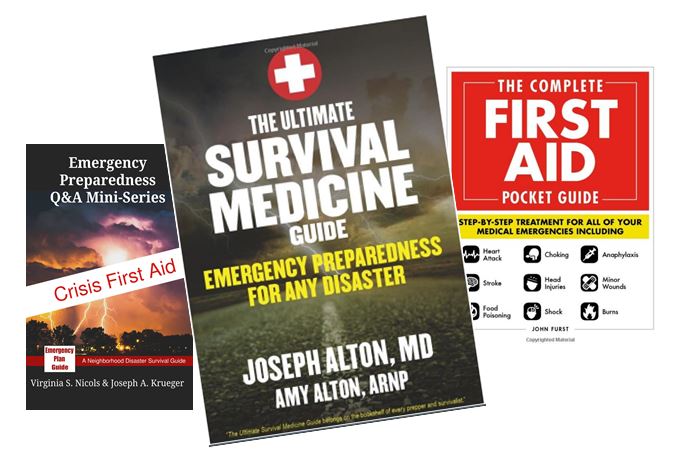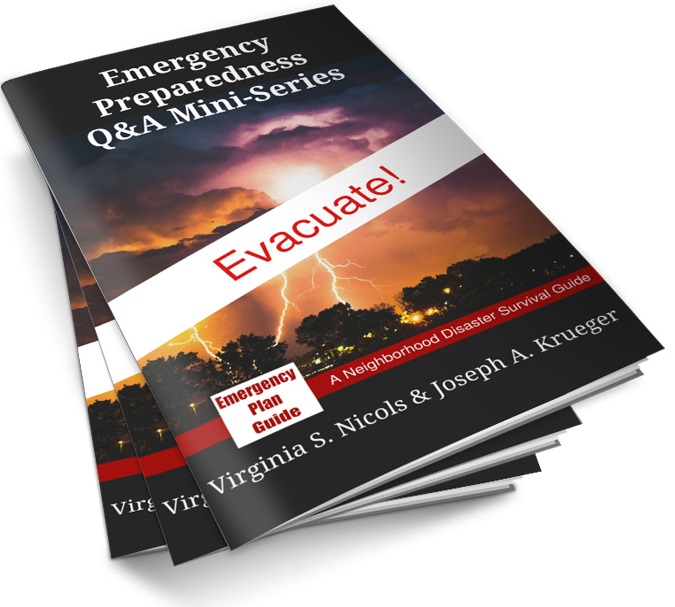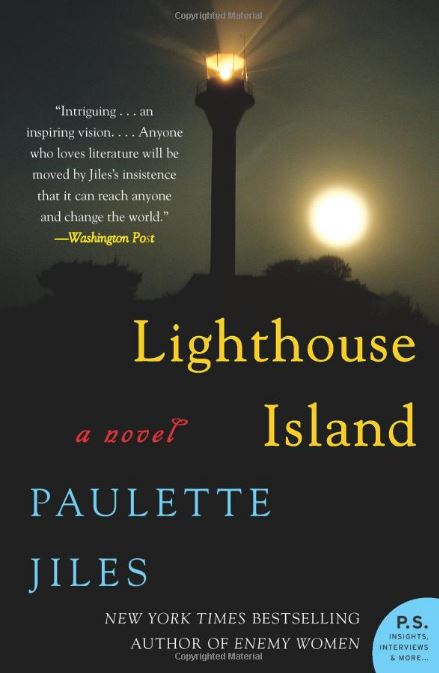First Aid Books

Are you an expert when it comes to first aid?
Probably not! If that’s the case, you are exactly in the right place. These three first aid books can help you become MORE expert!
Every prepper, survivalist, camper, boy scout and emergency manager needs some basic training in first aid. Heck, every parent needs training in first aid! The problem is, we just don’t get it as part of regular schooling. It’s up to each of us to use what we learned ourselves as children. . . to try something we watched on TV, or follow some “advice” on the internet – which invariably turns out to be an ad.
In other words, we mostly do the best we can and hope for the best.
Hoping for the best just didn’t work for me so I started doing some real research.
And after reading many articles, watching many videos, and getting a variety of hands-on trainings, it became clear that . . .
- I needed a good medical reference book written by a credentialed person.
- For my go-bags, I needed a handy not-too-heavy pocket-sized guide.
- I wanted to write a book for other “citizen responders” who are in my same insecure position!
So here are the three first aid books hat I feel very confident recommending. Click on the links and you can get to Amazon — where we are Associates — for more info.
My Go-to Reference
I sat down and pretty much read this book from cover to cover, all 311 pages of it! It is that good and that interesting! Lots of real medical jargon but so clearly described that you’ll find yourself saying, “Oh, so THAT’s what that is!” Hands down, this is my go-to reference. I have used it every week since I got it!
The Ultimate Survival Medicine Guide: Emergency Preparedness for ANY DisasterThe book above is, unfortunately, quite heavy. So to meet my need for a handier, easier to carry book, I searched further.
The Handy Pocket Guide
This one was a bit harder to find. Many of the first aid books are meant for people in the wilderness, and I was looking for something for people in an urban setting, too. This guide fits the bill: it’s a good size to tuck into a backpack or car glove compartment, big enough print to read in low light.
The Complete First Aid Pocket Guide: Step-by-Step Treatment for All of Your Medical Emergencies Including • Heart Attack • Stroke • Food Poisoning … • Shock • Anaphylaxis • Minor Wounds • BurnsOrganizing to Save More Lives
At our website, EmergencyPlanGuide.org, our emphasis is on helping people build stronger and more resilient communities. I was looking for a book that would help a neighborhood leader approach a disaster and organize response. Didn’t find it, so I wrote my own, which became the 12th booklet in our Emergency Preparedness Q&A Mini-Series.
Crisis First Aid: Emergency Preparedness Q&A Mini-Series (Personal Preparedness Mini-Series)The booklet that comes in your first aid kit probably won’t do the job.
Of course, you won’t become an expert reading any of these books, or even reading ALL of them. But you will likely be surprised, as I was, at how much you already know — and what a good feeling it is to have developed a new level of understanding.
Don’t deny yourself and your family this knowledge!

















